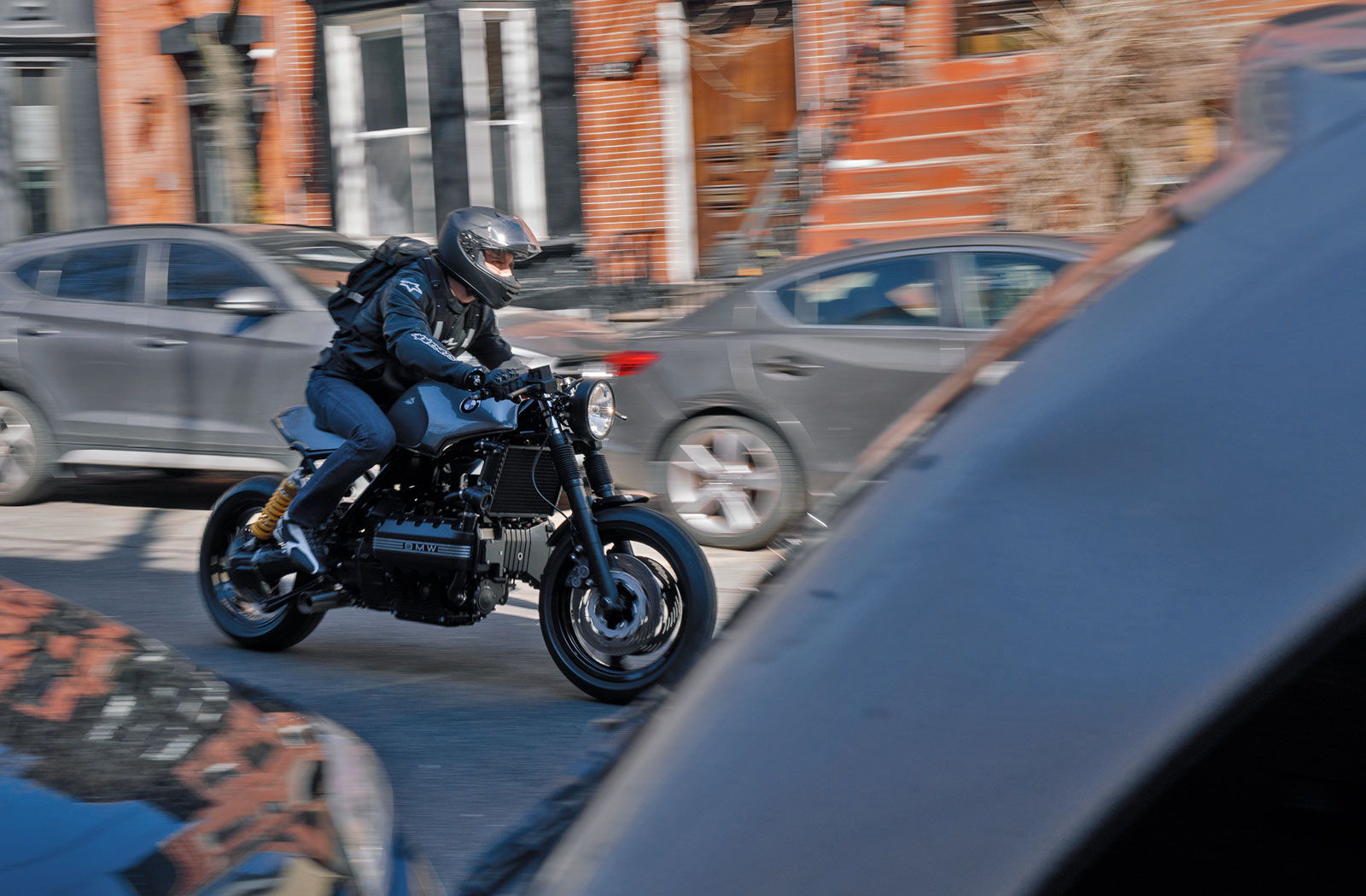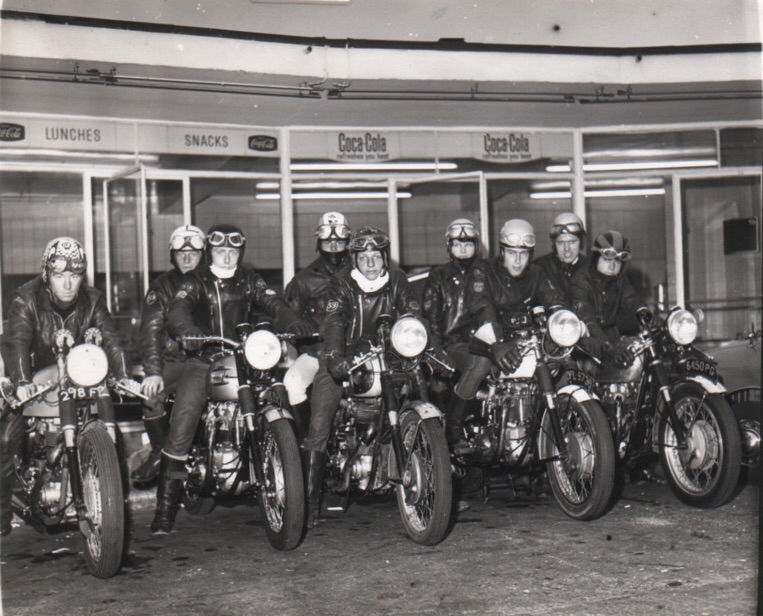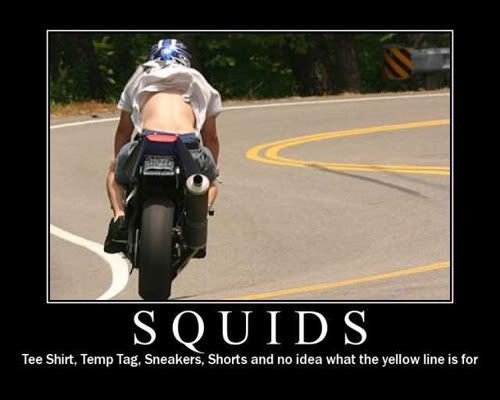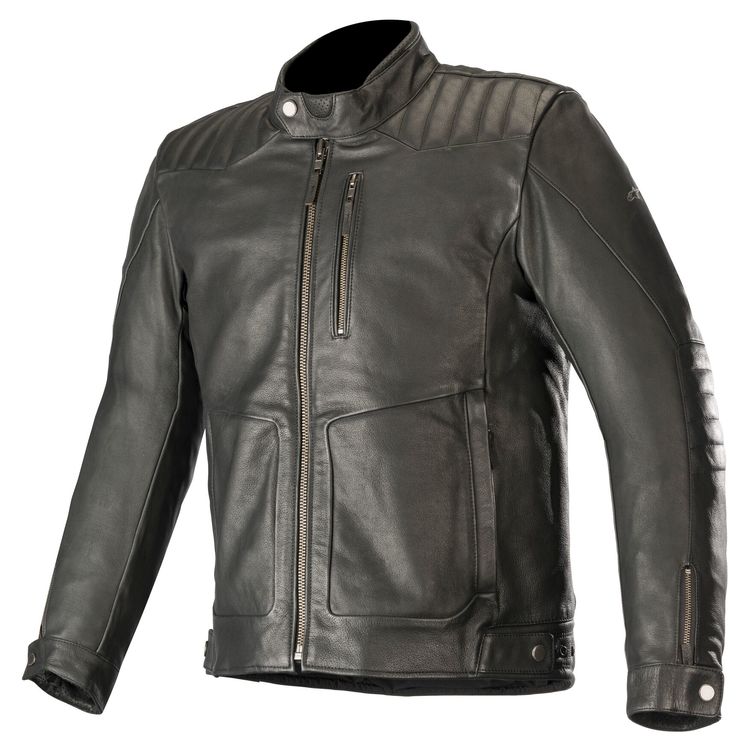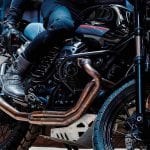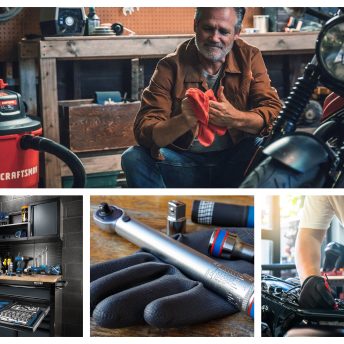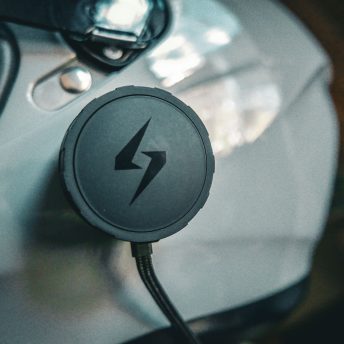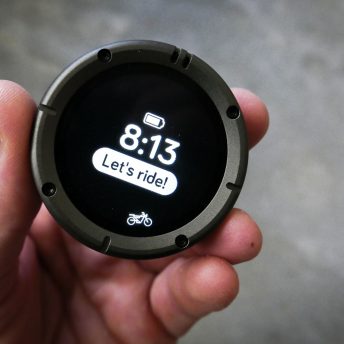**This article was written in collaboration with Road Guardians, an organization dedicated to teaching motorcyclist first aid and accident scene management. While we consulted with experts, every situation is different. In the event of an injury, it is best to contact emergency services and follow their instructions.
It may surprise many to know that despite the rebellious rocker image of the cafe racers in 1960s England, cafe riders have historically been the most likely group to wear appropriate riding gear. It probably helps that part of that image was wearing heavy duty boots, leathers, and open face helmets with goggles to emulate their Isle of Man TT and Moto Grand Prix racing heroes. Who knew that Chuck Berry and Elvis Presley would lead the charge for rider safety?
Roaring down the motorway network, tucked low and forward over the tank, low slung clip-ons in hand, a massive grin plastered on their faces, those first cafe racers were more likely to survive a crash than most other rider groups. By wearing the gear of the time, sometimes in open defiance of what others considered “proper riding,” those riders paved the way for improvements and refinements of safety gear. If you didn’t survive to see your name added to the list of “ton-up boys,” what was the point of racing down the M1 anyways?
The 60s & 70s
In 1960s England, the economy had recovered enough from World War 2 that it was possible for many households to have a car. In fact, some of the most classic British cars emerged during this time, such as the Mini, the Lotus Seven, and the like. Also happening at the time was the rock and roll revolution, the subculture shift that grabbed many a young man and woman by the horns and didn’t let go.
The cafe bike was born out of the rock and roll revolution to be, quite literally, a giant middle finger to the social norms of the time. Motorcycle racing was seen as a silly thing by the older generation, and the only place in the entire UK that motorcycles seemed to be fully embraced was the Isle of Man, with its famous and dangerous TT race. So, what better way to raise the other hand to give a second, even more gigantic middle finger to the older generation than to emulate those that raced in the TT?
Throughout the 60s, the common riding gear for a motorcycle was a pair of goggles, maybe a leather cap, and a bomber jacket. So when those motorcyclists crashed, it was often with grim consequences, especially on the newly built motorway system with its high speeds. Deaths were quite often the result of those crashes, and the UK government was taking notice.
But when a cafe racer crashed, going above the speed limit on the motorway, often up to and over 100 miles per hour (“the ton”), they would come out with a few scrapes and bruises, some broken bones, and friction burns, but they came out of those crashes alive.
In the early 1970s, after studying the underlying causes of motorcycle deaths and crashes, the UK government was shocked to find that those rebellious youngsters with their modified bikes were on to something. We can only imagine how big of a pill that was to swallow, but in 1973, after the studies, the first helmet law was passed, requiring all motorcyclists to wear a helmet when riding. The rest, as they say, is history.
The Present: What Happened?
Today, and over the past decade as well, the neo-cafe style of bike has emerged. More powerful and faster than those first cafe bikes, these bikes are still based around the concept of a low-slung riding position, lowered clip-ons, a narrow frame, and being a bit of a wagged middle finger right in the face of social norms. At the same time, the mindset of the rider has also shifted, and not in a good way.
Our modern version of the rebellious racer has a multitude of names, but the most common one is known as the SQUID: Stupidly Quick, Underdressed, Ignorant and Dangerous. These riders are the ones that you find tucked down on a bike on the Interstate, blasting by you on the shoulder at 160 MPH in a shirt and shorts. So, we must ask, what the hell happened?! When did it switch from being rebellious to wear protective gear, to being rebellious not wearing it?
An incredibly complex question, that is, and we’re not even going to attempt to answer it here.
However, there is something that every cafe and retro rider can do, and that is embrace the original rebellious nature of the cafe racer and gear up. In 2021, gear manufacturers have realized that there is indeed a market out there for retro-look gear, and they have made the gear appropriately retro and neo-cafe like the bikes we so dearly love. The biggest difference, however, is that these pieces of gear also sport some of the best protection that has ever existed in terms of crash and impact protection.
For an example, look at the recent Alpinestars Crazy Eight leather jacket above. It ticks the right boxes: Neo-cafe look. Dark leather. No-nonsense sport fit. But, unlike those original 1960s leathers, it also sports lightweight but extremely strong armor in the shoulders and elbows and is abrasion resistant to CE II Class A standards, which is pretty damned good.
The same is true with helmets. Those original fiberglass lids of yesteryear have long since been discontinued, but even the major companies like Shoei, Arai, and Bell have realized that there are those wanting the retro look. All you need do is look at something like the Arai Classic-V Groovy below. Retro looks, but underneath lies the legendary Arai quality of protection, reaching a Snell M2020 rating, usually reserved only for the best of the best full-face helmets.
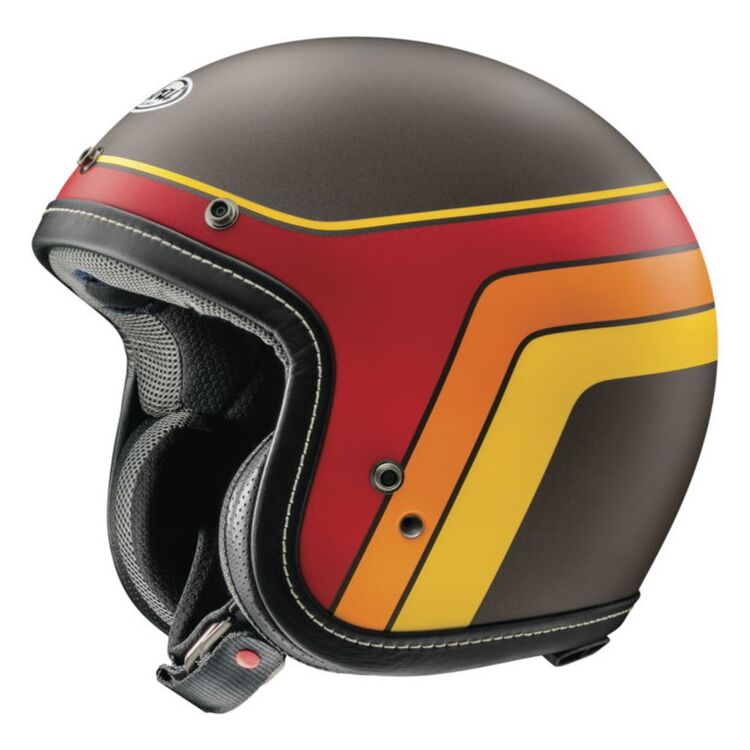

Fixing The Rider
Bringing this around to the entire point of the article, we think that there is already a new revolution happening. It may not be as shockingly in your face as the rock and roll revolution, nor the surprise of a 20-something ripping by your Mini on the motorway going over 100 MPH. It’s a velvet revolution, the quiet kind that is shared between riders with little waves, winks, and the occasional shared smile.
Just as the original ton-up boys of the past, it’s the cafe riders, the neo-retro riders, that are leading the charge into gearing up. For those that are looking at this right now with a bit of an incredulous look on their face, bear with us for a moment.
Riding is not about pushing your ragged limits on the road. Riding is not about buying a bike and then immediately testing its top speed. Wondered why we talked about the “ton-up boys” in the first section? Put simply, those rebellious cafe racers of the 60s and 70s, they had a goal to work towards. Getting your name on one of those cafe ton lists was a mark of skill, patience, and more than a little courage.
The reason is that those original cafe bikes had to be ridden with skill and awareness to reach the magical 100 MPH ton. Today, most bikes of 400cc’s or more can hit 100 MPH with room to spare, but the point is this: Those original cafe racers worked their way up to that level. And while they were doing it, because they wanted to keep doing it, they started wearing protective equipment.
So, check your mindset. Do you really want to ride insanely fast, get your knee down, find the ragged edge in 6th gear? One of the nice things about the US is that there are a ton of race tracks dotted all over the place. Join a track day, go, learn, enjoy, and be insanely fast where you are also the most protected.
If you want to embrace the true spirit of the cafe racer, to properly honor their rebellious nature and occasionally sip on a lovely cup of tea, be the rebel and wear full gear. Be the rebel, and work your way up the skill ladder. Be the rebel, and survive your rides.
And then, when you’re 80, sitting in a comfortable armchair regaling your grandkids with stories of your riding days, you can grin knowing that you’re giving the SQUIDs the biggest middle finger of all. You lived to enjoy decades of riding, they threw it away in the first decade by being “rebels.”
